Evelina Domnitch and Dmitry Gelfand explore exotic physical phenomena
Published 21 January 2021 by Maxence Grugier
Belarusian/Russian artists Evelina Domnitch and Dmitry Gelfand explore the increasingly intimate relationship between artistic visions and emerging scientific theories and discoveries.
Currently directing the Synergetica Lab in The Hague, Evelina Domnitch and Dmitry Gelfand adopt an art-science approach to deep philosophical questions, while investigating the visible and invisible physical properties of our universe through their transdisciplinary performances and installations. They have been awarded the Japan Media Arts Excellence Prize in 2007, the Meru Art Science Award in 2018, as well as five honorable mentions at Ars Electronica (2007, 2009, 2011, 2013, 2017). Their artworks have been exhibited at the Venice Biennale, Martin-Gropius-Bau (Berlin), AxS Festival (Los Angeles) and Kiasma (Helsinki).
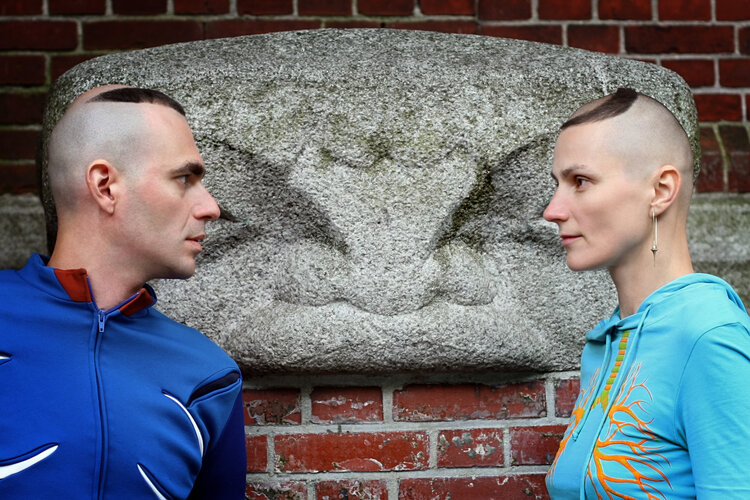
Makery: First of all, how are you surviving the pandemic? Where were you when it all started?
Evelina Domnitch and Dmitry Gelfand: We are peripatetic artists, so our lives have drastically changed since the onset of the pandemic. As the virus was creeping into Europe we had a very dense schedule of exhibitions, performances and lectures, from the Landesmuseum (Innsbruck) and Centquatre (Paris), to iMal (Brussels) and Mirage Festival (Lyon).
We were lucky to have completed a new artwork, Hilbert Hotel, right before its premiere in Paris, at the very moment when the Louvre stopped permitting visitors. Hilbert Hotel refers to a paradox proposed by 20th century mathematician David Hilbert, as to whether an infinite hotel can accommodate an infinite number of arriving guests. Evoking the continuous juggling of an infinite amount of matter within our limitless cosmos, the artwork electrically levitates its myriad guests, which are hollow glass microspheres, and confines them to wiggling square-shaped orbits.
When the lockdown began in France, Mirage Festival had just opened the Cosmogonies exhibition, which was forced to close 36 hours later. A few months ago we were informed that the festival will sadly cease to exist. At this stage, quite a few cultural institutions and art festivals have perished as casualties of the new Covid-19 regime.
During the academic year of 2019-20 we were guest artists at Le Fresnoy, an unrepeatable invitation. Since all teaching activities had to be conducted remotely as of March, our precious opportunity to get entangled with the next generation of artists was strongly compromised. However, we managed to develop a new artwork, Time Synthesizer, currently on view at Le Fresnoy’s Panorama exhibition. TThe installation probes the elusive transition from smooth to turbulent flow. Within a black basin pulsated hydrogen bubbles trace the surface dynamics of a flowing body of water. Because the laser-illuminated bubbles are emitted at even time intervals, the onset of turbulence pronouncedly warps our perception of time’s flow.
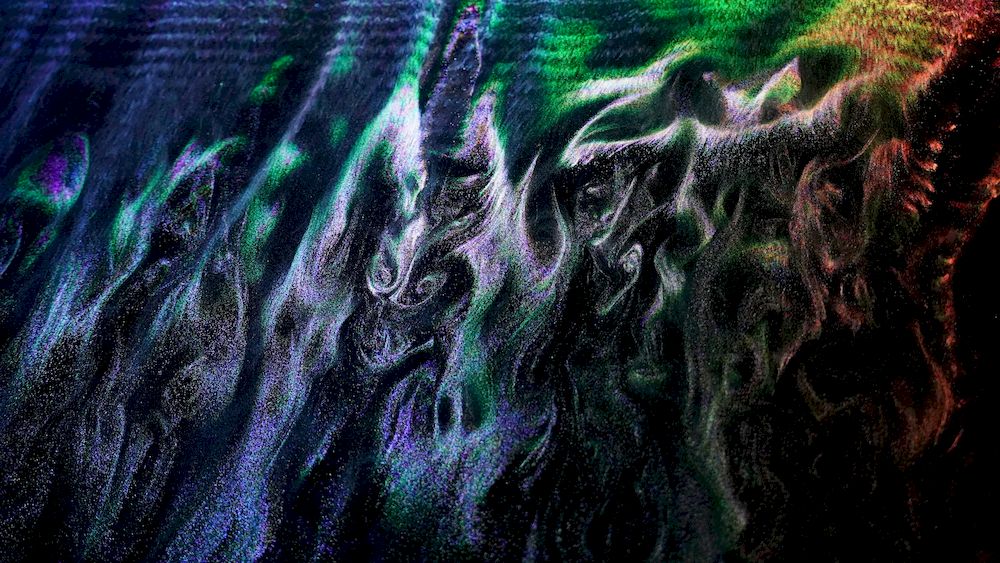
Does the current health crisis resonate with the ideas that inspire your work?
Coincidentally during the year prior to the pandemic, we developed a research project called Aerobiome, exploring the living microscopic contents of the air we breathe. From an aesthetic point of view, urban air quality is atrocious, and yet we share the air, like an all-enveloping mutual organ, with all living beings on our planet. We conducted workshops at Het Nieuw Instituut (Rotterdam), during which we gathered and cultivated air samples harbouring a variety of bacteria and fungal spores. We were rather shocked by the lack of attendance, indicative of the fact that most urbanites are not in a symbiotic mind frame with our aerial ecosystem, and are instead squeamish and alienated.
How did you two first meet?
We met in New York City in the late nineties where there was a tightly knit community of post-Soviet bohemian youth reaping the fruit of the fall of the Iron Curtain. Dmitry was completing his degree in filmmaking at NYU, while Evelina was starting graduate studies in philosophy at Fordham University. Dmitry was already quite disenchanted with film due to the way in which the depth and dynamics of light are distorted and fixed onto a 2-dimensional surface. Evelina was equally unexcited about the prospects of an academic career in philosophy, as this discipline plays a minute role in contemporary culture. Alternatively, apart from the predatory art market, there was a fascinating art scene in New York at that time. We were lucky enough to befriend Morton Subotnick, the pioneer composer, and his no less illustrious wife, vocalist and composer Joan La Barbara.There were still remnant giants of conceptual and minimalist movements, such as James Turrell, Dove Bradshaw, William Anastasi, Earle Brown, Merce Cunningham, Fred Sandback (who was our neighbor), Mathew Barney, and Willoughby Sharp, some of whom became close friends. We also met there our future collaborators, composers Richard Chartier, William Basinski and Taylor Deupree.
At Mirage Festival in Lyon, we discussed the influence of Soviet science-fiction. Are you inspired by this movement?
We strongly resonate with Soviet sci-fi author and paleontologist Ivan Yefremov, which can be loosely translated as Bladerunner (1963), projects an evolved society of artist-scientist-philosophers, in counter distinction to the technologically driven nihilism of its American counterpart. Among the foundations underlying Efremov’s writings was a marginal 19th century philosophical movement known as Russian Cosmism, which later branched out into such varied domains as cosmonautics (developed by Konstantin Tsiolkovsky, the first rocket scientist), Suprematism (under the auspices of Kazimir Malevich), and biogeochemistry (spearheaded by Vladimir Vernadsky). Both Tsiolkovsky and Malevich contemplated the weightless presence of humans beyond the Earth’s atmosphere as an imminent evolutionary leap, indispensable for gaining a wider cosmic perspective of our planet. After abandoning painting in favour of pure thought experiments, Malevich proclaimed that “the future goal of art, however distant, will consist of distributing weight within systems of weightlessness”. [Malevich, K. Essays on Art, Vol. 1. 1915-1928] Malevich’s pursuit of weightlessness has fueled such floating artworks as the aforementioned Hilbert Hotel (2020)– the square orbits of which, not found elsewhere in nature, are an homage to the Black Square; and Force Field (2016), where acoustically levitated water droplets evoke the orbital dynamics of celestial bodies.
Vernadsky posited that living matter cannot be understood without taking into careful consideration the structure of the entire cosmos. Attempting to unravel his hypothesis, our installation Luminiferous Drift (2016) stages a glowing ocean-covered planet seemingly viewed from outer space. Modelled upon the hexagonal polar vortex crowning Saturn, the ocean of this hypothetical planet rotates within a cylindrical basin along two axes, spinning at slightly different speeds. The ocean currents are intricately traced and illuminated by a swarm of protocells – akin to unicellular bioluminescent plankton, a light-emitting chemical reaction is encapsulated within an oil membrane, and the luminescence is triggered through acceleration. Encompassing such areas of research as synthetic biology, fluid dynamics and climatology, Luminiferous Drift is the result of of collaborative engagement with Hui Lab (University of California, Irvine), the LadHyX hydrodynamic laboratory at Ecole Polytechnique directed by Jean-Marc Chomaz, and the Huck group at Radboud University.
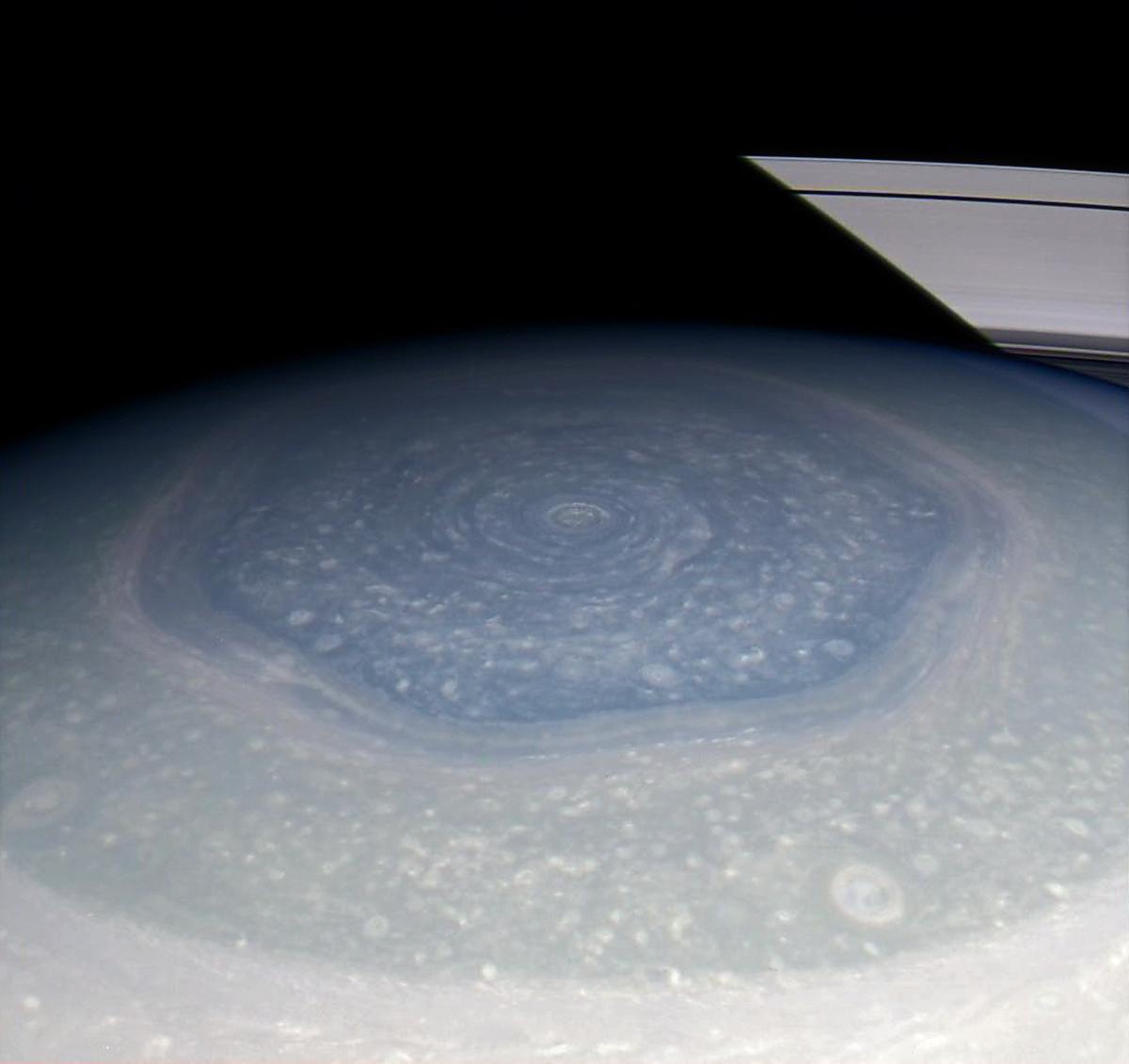
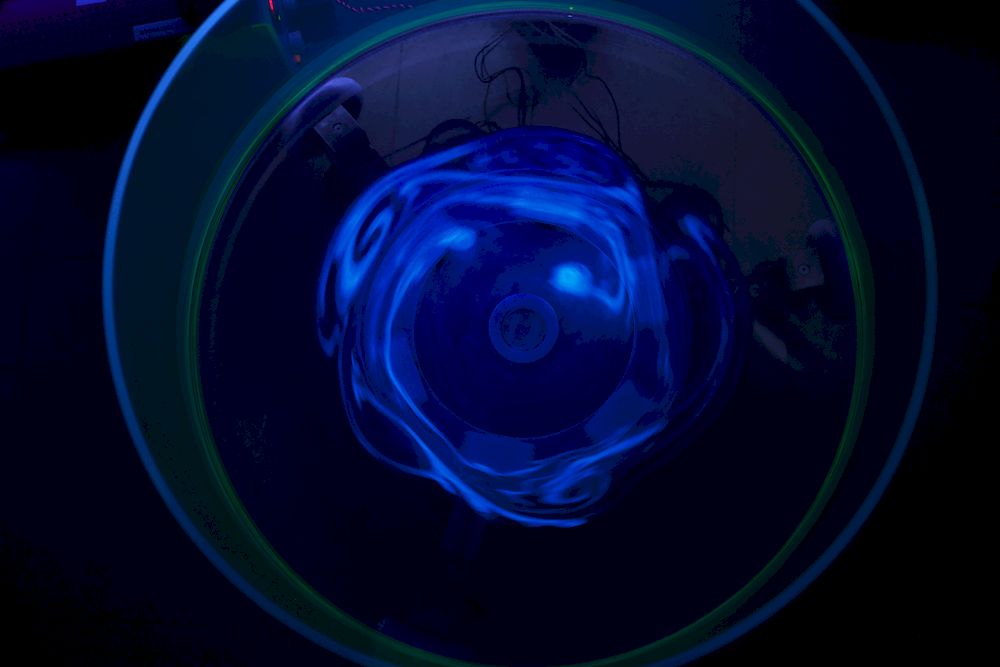
How do you feel about the fuss around art–science, as artists who have long been invested in this combination of disciplines?
Art, science, as well as one of science’s predecessors, the art of alchemy, have comprised an unflinching strife towards knowledge, in the form of know-how, inventiveness, and the discovery of the unknown – for the sake of discovery alone. Today science is a highly institutionalised, measurement-driven colossus that is vastly removed from direct sensorial experience. How can this burning bridge be gapped? How can scientific knowledge and human experience be reunited along a once self-evident path? It was perhaps this very inquiry that initially motivated us to collaboratively conduct artistic experiments as unmediated empirical encounters with exotic physical phenomena.
These are, indeed, ephemeral phenomena, for we had rejected from the start art’s age-old infatuation with the illusion of permanence. We established a series of constraints, whereby we dismissed the use of solid, fixative, and recording media in favour of liquids, gases, and plasmas permeated by various wave dynamics. We seek to perceive the world as composed of waves, fields, and interactions, instead of objects. It is through experiences, and not objects, that we think art must communicate. The quantity of human-made objects and materials has already piled up into a heap outweighing the Earth’s biomass!
Your works sometimes seem quite cerebral, but it’s clear that they also celebrate life, with all its esthetic, physical, scientific and artistic parameters. It’s also a lesson in good behavior: this is the only planet we have. You aren’t the kind of artists who want to flee the Earth and escape into space…
Nearly all artists who engage with science inevitably delve into the ecological crisis that we are currently facing. Having taken humanity’s severe environmental negligence into account, the pursuit and navigation of scientific knowledge is becoming a poignantly ethical endeavour. Despite scientific substantiation of life’s scarcity in the universe, our civilization continues to behave as though we have multiple earths at our disposal. Nonetheless, we believe that human (in addition to robotic) space exploration is tremendously important both for science in-itself and for stirring and spreading the overview effect.
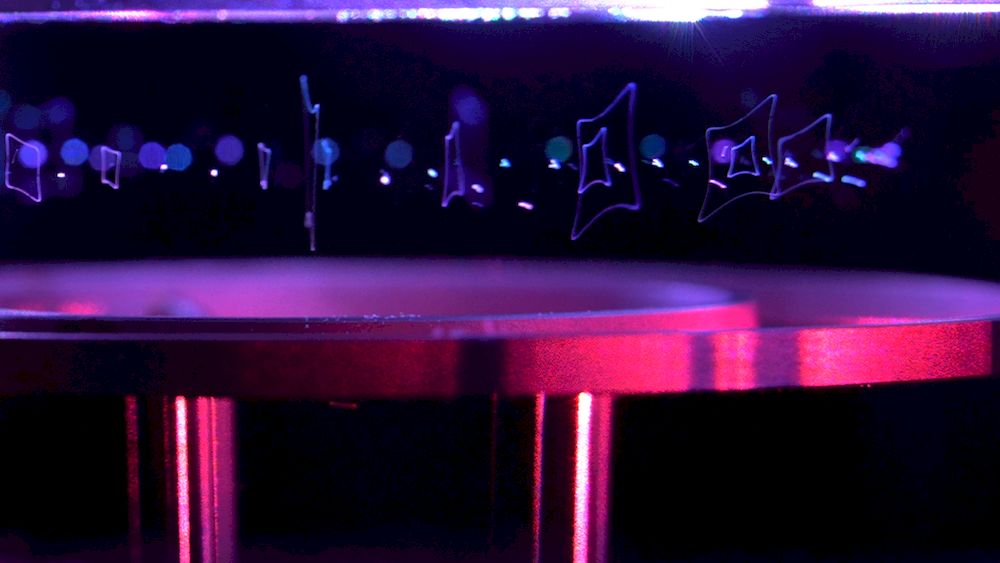
Can you say a few words about Synergetica Lab?
We have recently moved from Amsterdam to The Hague, and our laboratory has become part of a grass roots art organisation called iii (Instrument Inventors Initiative). Established by alumni (and former students of ours) of the ArtScience Department, Royal Academy of the Fine Arts (The Hague), iii is an interdisciplinary collective of sensory expanding performance and installation artists. In 2021 we will launch our curatorial project at iii, Obviously Unthinkable.
More about Evelina Domnitch and Dmitry Gelfand
Synergetica Lab is now based in The Hague
